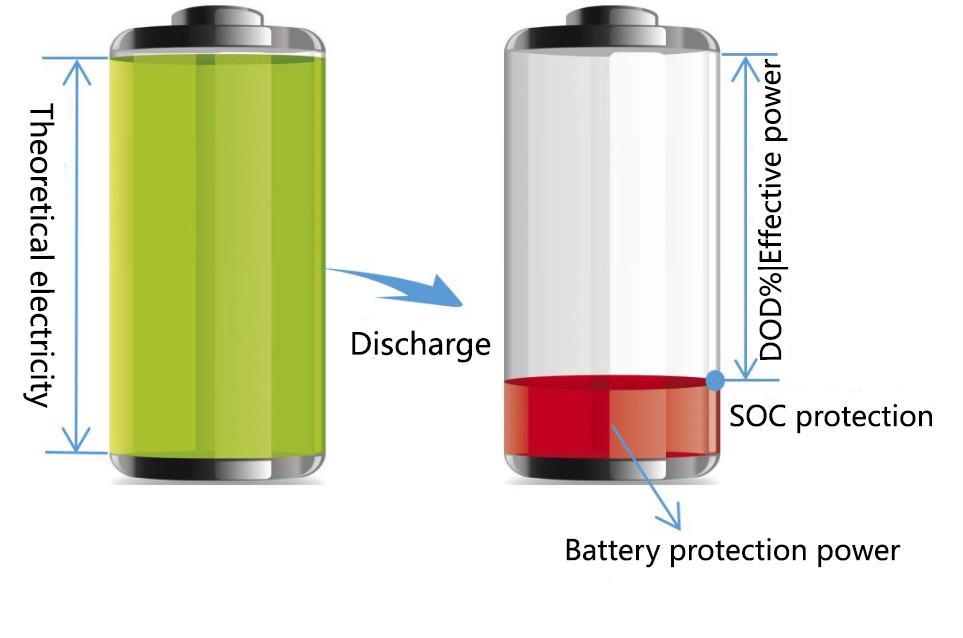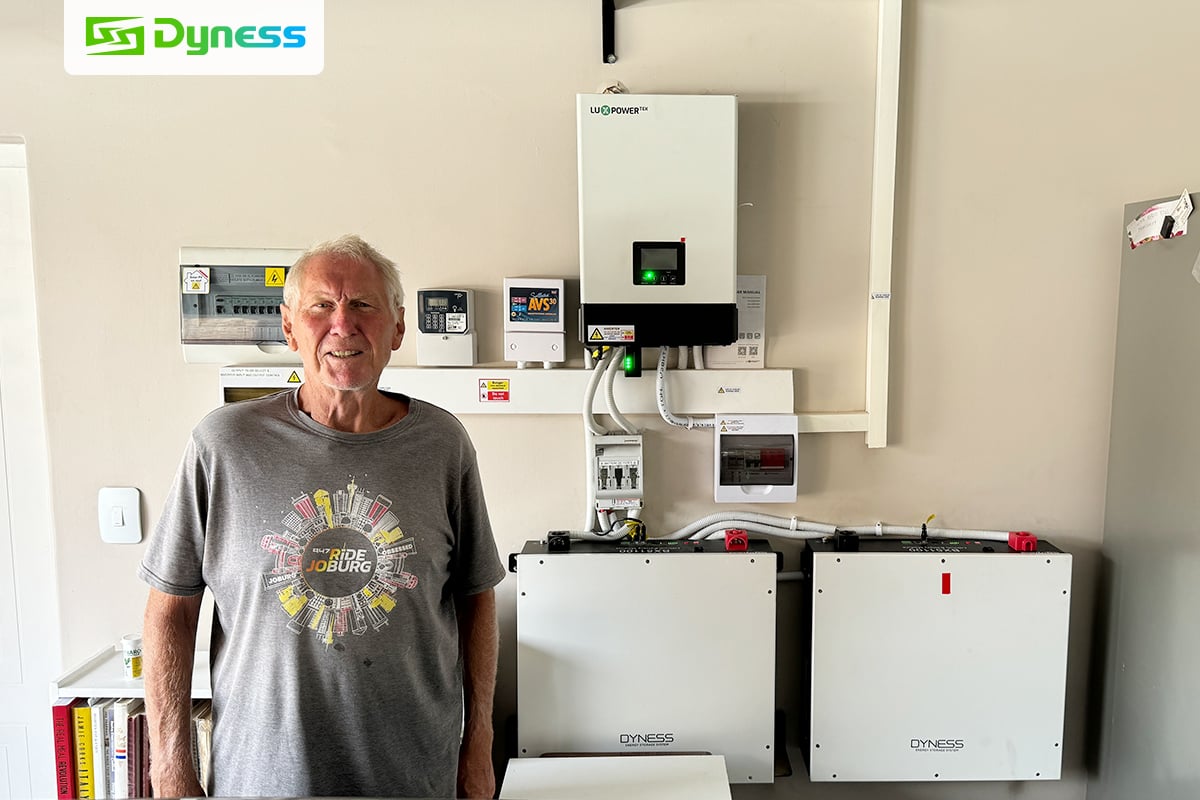Dyness Knowledge | Solar and energy storage must-learn terminology(C&I)
Power Generation
Dyness Knowledge | Solar and energy storage must-learn terminology(C&I)
The energy storage system is mainly composed of battery system, battery management system (BMS), energy management system (EMS), energy storage converter (PCS) and other electrical equipment. In the energy storage system, the battery pack feeds back status information to the BMS, and the BMS shares it with the EMS and PCS. EMS sends control information to PCS and BMS according to optimization and scheduling decisions, and controls single battery/battery pack to complete charging and discharging.
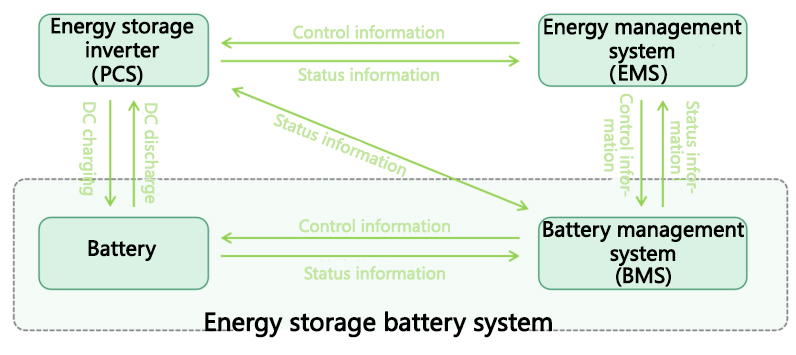
BMS
BMS (Battery Management System), commonly known as battery nanny or battery steward. The main function is to intelligently manage and maintain each battery unit. By monitoring the battery status in real time, the battery function is stable and safe, and the battery life is extended. Circuit breakers, contactors, fuses, current sensors, battery cluster control management modules, switching power supplies, etc. are usually installed in the BMS module. The voltage, current and temperature of the battery are monitored in real time through sensors. At the same time, it also performs leakage monitoring, thermal management, battery balance management, alarm reminder, calculation of remaining capacity (SOC) and battery state of health (SOH).
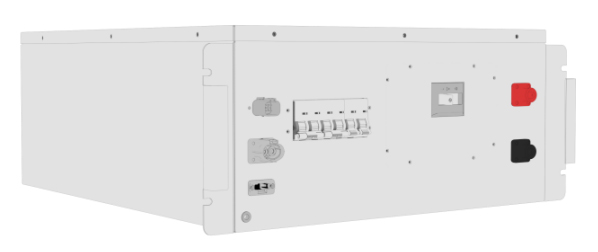
Appearance of BMS (Dyness DH200F product)
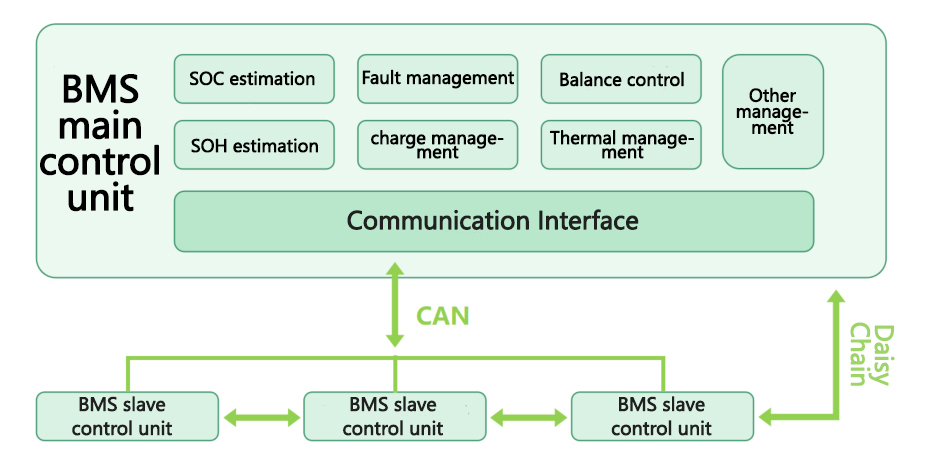
According to the topology, it can be divided into centralized BMS and distributed BMS. All data acquisition processing and control instructions of the centralized BMS are completed by a main control chip, which is suitable for scenarios with low capacity and few batteries. Distributed BMS is often used in energy storage batteries, and its advantage is that it can be efficiently configured according to the series and parallel design of different battery systems. It can better realize the hierarchical management of module level (module) and system level (Pack), and supports the design of larger battery systems. Energy storage BMS usually adopts a three-layer structure of slave control-master control-master control, which are respectively the single battery management BMU, the battery pack management BCU, and the battery cluster (multiple groups) management BAU.
EMS
EMS (energy management system) is an important part of the energy storage system. Combined with PCS, BMS, environmental monitoring equipment, fire protection system, electricity meter, air conditioner or access control system to form an energy storage system. EMS collects the data and signals of local equipment, and ensures the safe, reliable, efficient and economical operation of the energy storage system through internal control strategies. The composition of EMS energy management system is generally divided into equipment layer, communication layer, information layer and application layer.
Equipment layer: Energy harvesting conversion (PCS, BMS) is required for support.
Communication layer: mainly includes link, protocol, transmission, etc.
Information layer: mainly includes cache middleware, database, and server, among which the database system is responsible for data processing and data storage. Record real-time data and important historical data, and provide historical information query.
Application layer: the form of expression includes APP, Web, etc., providing managers with a visual monitoring and operation interface.
Appearance of EMS (Dyness DH200F product)
PCS
Energy storage converter PCS (Power Conversion System), also known as bidirectional energy storage inverter, is a bidirectional current controllable conversion device that connects the energy storage battery system and the grid. The main function is to realize the energy exchange between the battery and the grid, and to control and manage the charge and discharge of the battery. It can not only convert AC power into DC power to charge the battery, but also convert DC power into AC power to supply power to loads or feed back to the grid.
Due to different application occasions, the functions and technical parameters of PCS are quite different. Attention should be paid to system voltage, power factor, peak power, conversion efficiency, switching time, etc. when selecting. The selection of these parameters has a great influence on the function of the energy storage system.
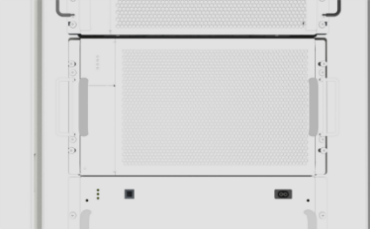
Appearance of PCS (Dyness DH200F product)
Full scene application
BMS, EMS, and PCS are three indispensable parts in the electrochemical energy storage system. BMS plays the role of perception and is responsible for battery monitoring, evaluation and protection. EMS plays a decision-making role, responsible for data collection and command scheduling. The PCS takes the role of execution and performs AC-DC conversion. These three systems together ensure the high safety, high reliability, and high applicability of the energy storage system, and can be widely used in charging stations, factories, parks, commercial buildings and other scenarios. Provide users with functional services such as peak shaving and valley filling, capacity reduction and demand reduction, new energy consumption improvement, demand response and backup power supply.
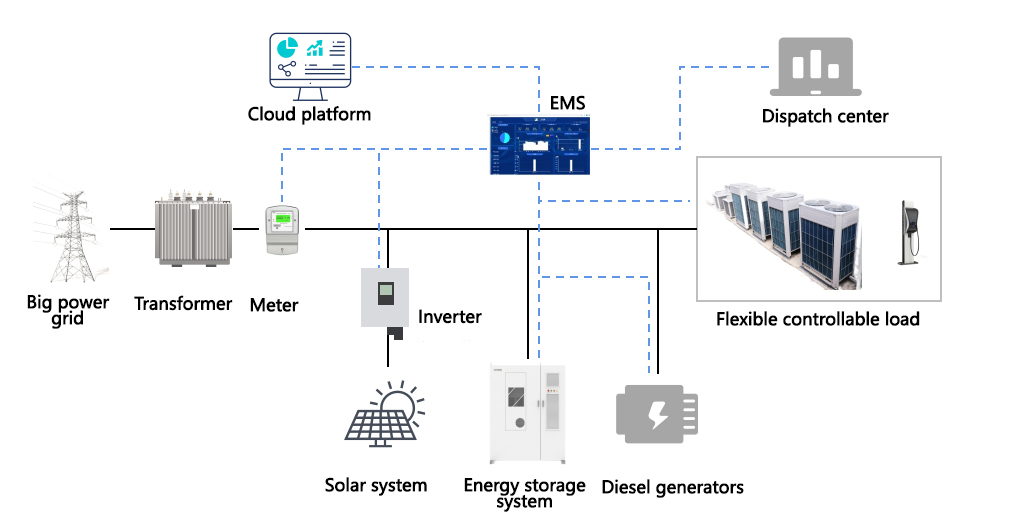
Dyness has been deeply involved in the field of energy storage for many years, and has rich experience in battery research and development and Pack design. A variety of industrial and commercial storage products integrating batteries, BMS, EMS, PCS, etc. have been successfully developed. The company has a mature self-developed BMS technology and adopts a three-layer distributed architecture of slave control-master control-master control, which can fully guarantee the high reliability, high safety and long life of its own battery products.
Dyness Digital Energy Technology Co., LTD
WhatsApp: +86 181 3643 0896 Email: info@dyness-tech.com
Address: No.688, Liupu Road, Suzhou, Jiangsu China
Dyness community: https://www.facebook.com/groups/735600200902322


